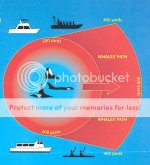localboy
New member
- Joined
- Sep 30, 2006
- Messages
- 4,673
- Reaction score
- 0
- C Dory Year
- 2007
- C Dory Model
- 25 Cruiser
- Vessel Name
- 'Au Kai (Ocean Traveler)
FYI.
In short:
How a silent kayak creates "underwater noise" is beyond me, but then I have common sense. :?
Read more: http://www.seattlepi.com/default/articl ... z1J24avQdD
http://www.seattlepi.com/default/article/New-rules-keep-boats-ships-and-kayaks-200-yards-1329590.php
In short:
Vessels will be prohibited from approaching any killer whale closer than 200 yards and from intercepting an orca or positioning in its path.
Exemptions to the rules for safety include vessels actively fishing commercially, cargo vessels traveling in established shipping lanes, and government and research vessels.
Excluded from the new rules is a seasonal half-mile wide no-go zone along the west side of San Juan Island, which, when first proposed in July 2009, drew heavy criticism.
How a silent kayak creates "underwater noise" is beyond me, but then I have common sense. :?
Read more: http://www.seattlepi.com/default/articl ... z1J24avQdD
http://www.seattlepi.com/default/article/New-rules-keep-boats-ships-and-kayaks-200-yards-1329590.php





